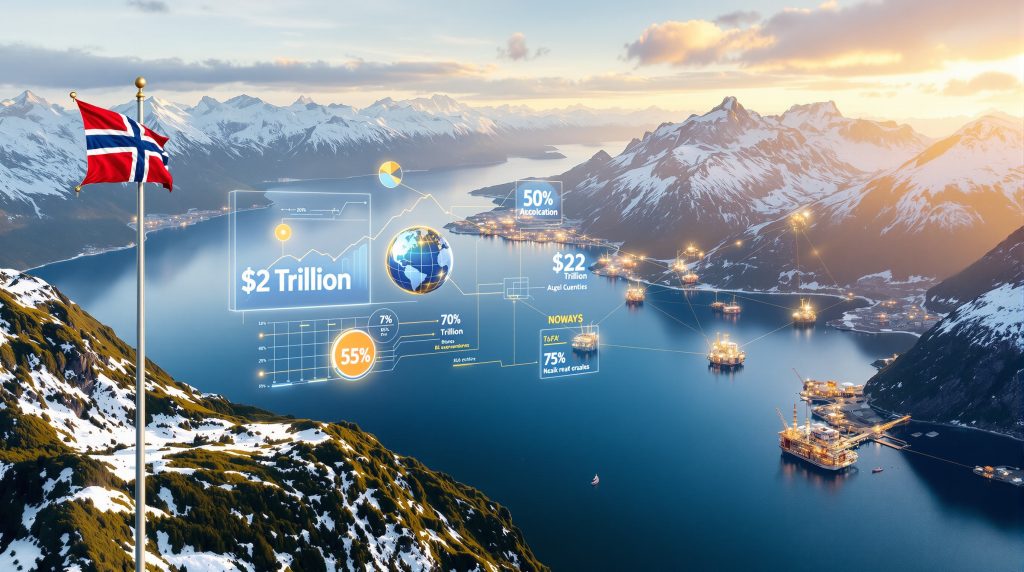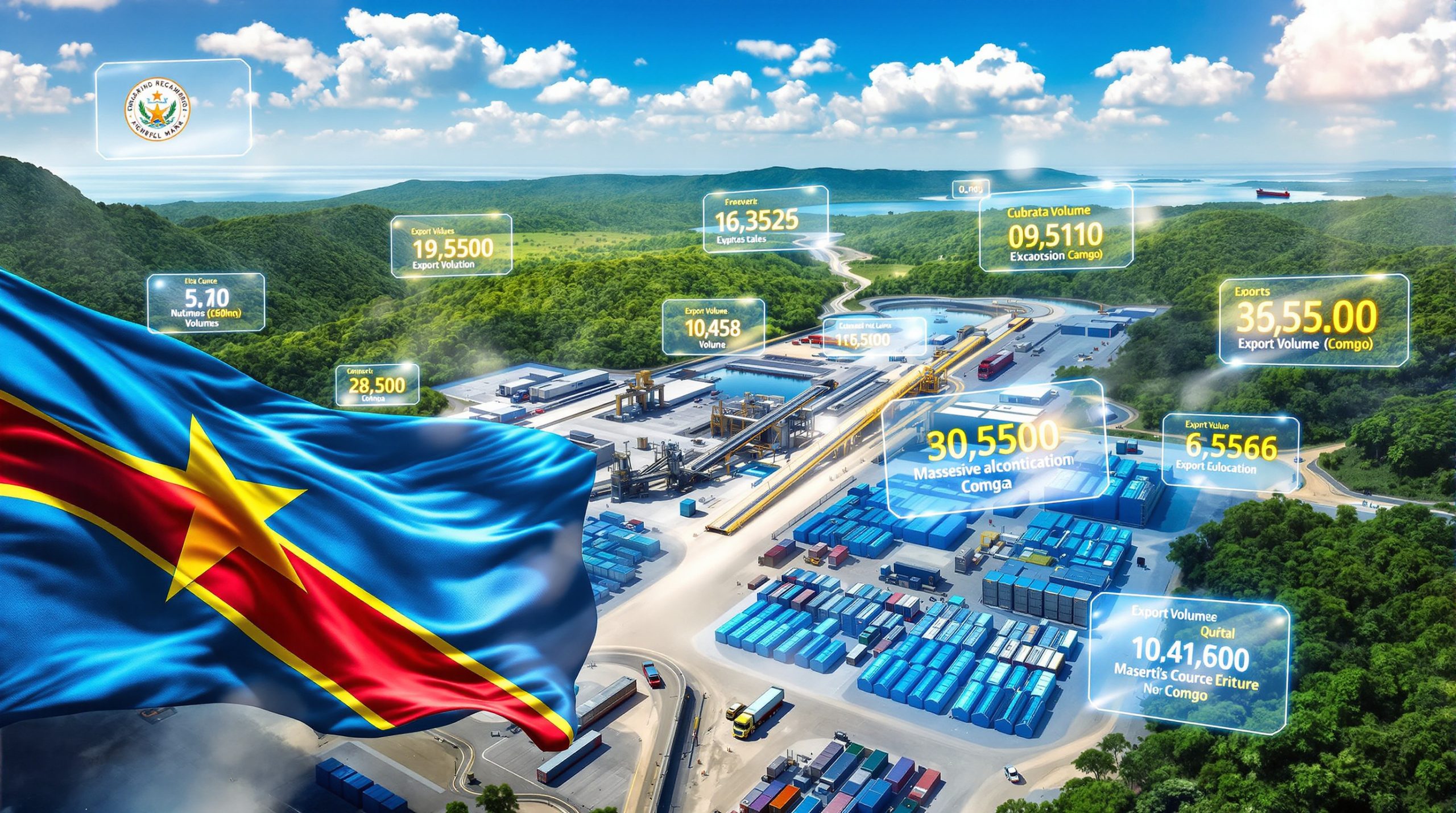Norway's Strategic Petroleum Wealth Management Model
Norway's Government Pension Fund Global stands as the world's most successful example of sovereign wealth management, transforming volatile oil revenues into sustained economic prosperity. Norway to boost spending from its $2 trillion oil fund represents a carefully calibrated approach to managing this unprecedented resource wealth. Established in 1990, this fund has grown to approximately $1.7 trillion USD as of 2025, making it the largest sovereign wealth fund globally.
The Norwegian model differs fundamentally from other oil-producing nations through its disciplined separation of petroleum revenues from immediate government spending. While countries like Venezuela and Nigeria have struggled with resource curse effects, Norway created a comprehensive framework that channels all petroleum income into the fund while limiting government spending to the expected real return of approximately 3% annually.
This conservative approach has enabled the fund to own roughly 1.5% of all publicly listed companies worldwide across more than 9,000 individual holdings. The fund's transparency standards exceed those of most sovereign wealth funds, publishing detailed quarterly reports and maintaining compliance with the Santiago Principles for responsible sovereign wealth management.
Asset Allocation and Investment Strategy
The fund's investment strategy emphasises global diversification and long-term value creation. According to Norges Bank Investment Management's latest reports, the current asset allocation maintains:
| Asset Class | Allocation | Strategic Purpose |
|---|---|---|
| Global Equities | 70.4% | Long-term growth and inflation protection |
| Fixed Income Securities | 27.2% | Portfolio stability and risk reduction |
| Unlisted Real Estate | 2.4% | Inflation hedging and income generation |
| Renewable Energy Infrastructure | 0.1% | Future energy transition positioning |
The fund's geographic distribution spans over 70 countries, with approximately 40% invested in European markets, 35% in North American assets, and 25% across Asia-Pacific regions. This global approach has delivered an annualised real return of approximately 5.9% since 1998, significantly outperforming the conservative 3% spending target.
Furthermore, the investment approach combines primarily passive, index-weighted strategies with selective active management components. This methodology keeps management costs remarkably low at approximately 0.05-0.07% of assets under management, among the most efficient globally for funds of this scale.
Enhanced Spending Plans for 2026
Norway's proposed increase in oil fund spending for 2026 reflects a strategic response to evolving economic conditions and political priorities. The Labour Party government, led by Prime Minister Jonas Gahr Støre, must navigate minority coalition dynamics while maintaining the fund's long-term sustainability principles.
The spending increase addresses several key economic pressures:
- Counter-cyclical fiscal support during global economic uncertainty
- Infrastructure modernisation requirements for Norway's aging systems
- Social program maintenance amid rising demographic pressures
- Energy transition investments supporting renewable energy development
Recent inflation pressures across Europe have also influenced spending considerations, as the real purchasing power of government transfers requires adjustment to maintain existing service levels. The proposed withdrawal remains well within the established 3% spending framework while accounting for these economic realities.
Political negotiations surrounding the 2026 budget involve balancing fiscal discipline with domestic investment needs. However, the Labour Party's coalition partners typically advocate for increased spending on education, healthcare infrastructure, and social programs, creating pressure to maximise fund utilisation within established guidelines.
Economic Buffer and Fiscal Stability Mechanism
The oil fund serves as Norway's primary economic shock absorber, historically contributing 15-25% of total government expenditure. This fiscal buffer mechanism enables consistent public spending regardless of petroleum price volatility, insulating the Norwegian economy from the boom-bust cycles that plague many resource-dependent nations.
Norway's comprehensive welfare system directly benefits from this stability. The fund's annual transfers support:
- Universal healthcare coverage with minimal patient costs
- Free education through university levels
- Subsidised childcare enabling high workforce participation
- Generous parental leave policies supporting family welfare
- Comprehensive unemployment and disability support systems
The fund's foreign currency denomination provides additional economic benefits by reducing "Dutch Disease" effects on Norway's non-oil sectors. By investing petroleum revenues globally rather than domestically, Norway avoids the currency appreciation and domestic inflation that typically harm export competitiveness in resource-rich economies.
During economic downturns, the fund enables counter-cyclical spending increases while maintaining long-term fiscal sustainability. The 2008 financial crisis and COVID-19 pandemic demonstrated this flexibility, as Norway increased fund withdrawals to support economic recovery without compromising the fund's growth trajectory.
Ethical Investment Framework and Global Influence
Norway's fund operates under comprehensive ethical guidelines that have established global standards for responsible sovereign wealth management. The Council on Ethics for the Government Pension Fund Global provides independent recommendations on investment exclusions based on international law, human rights standards, and environmental criteria.
As of 2025, the fund has excluded over 100 companies based on ethical guidelines covering:
- Product-based exclusions: Coal production above specified thresholds, tobacco manufacturing, certain weapons systems
- Conduct-based exclusions: Human rights violations, severe environmental damage, systematic corruption
- Nuclear weapons: Companies involved in nuclear weapons development or production
The fund's massive scale creates significant influence on corporate governance practices globally. Research published in leading financial journals has documented measurable improvements in governance metrics among companies with substantial GPFG ownership stakes.
Through active ownership practices, the fund voted at approximately 11,000 shareholder meetings in 2024, supporting roughly 85% of management proposals while advocating for enhanced environmental, social, and governance standards. Furthermore, the fund publishes detailed expectation documents covering climate change, water management, human rights, anti-corruption measures, tax transparency, and ocean sustainability.
This responsible investment approach has influenced other sovereign wealth funds globally, with countries including Kazakhstan, East Timor, and Ghana studying Norway's model when establishing their own resource funds.
Global Market Impact and Systemic Influence
The fund's enormous size creates both stabilising effects and potential systemic risks for global financial markets. With average holdings of 1.5% across approximately 9,000 companies, the fund represents one of the world's largest passive institutional investors.
Market participants closely monitor the fund's quarterly rebalancing activities, as allocation shifts can influence sector-wide capital flows. The fund's commitment to index-weighted investing provides market stability, while its long-term investment horizon offers patient capital during market volatility.
The fund's influence extends beyond traditional financial metrics through its corporate engagement activities. Companies increasingly align their practices with GPFG expectations on climate change, governance standards, and social responsibility to maintain access to this significant capital source.
Climate risk management has become a particular focus area, with the fund conducting comprehensive analysis of transition risks across its portfolio. While maintaining diversified exposure to traditional energy companies, the fund has gradually increased allocations to renewable energy infrastructure and companies positioned to benefit from energy transition trends.
Historical Spending Context and Fiscal Evolution
The evolution of Norway's spending rule reflects changing economic conditions and refined understanding of sustainable withdrawal rates. Originally established at 4% in 2001, the spending target was reduced to 3% in 2017 based on expert committee recommendations citing lower expected global returns and interest rates.
Historical withdrawal patterns demonstrate the rule's flexibility within conservative parameters:
- 2023: Approximately 341 billion NOK transferred to government budget
- 2024: Approximately 380 billion NOK supporting expanded fiscal priorities
- 2026 Proposed: Increased allocation reflecting inflation adjustments and strategic investments
The spending rule applies to structural, non-cyclical budget deficits, allowing temporary deviations during economic downturns while maintaining long-term sustainability. This approach has enabled Norway to avoid the procyclical fiscal policies that destabilise many resource-dependent economies.
Real return calculations incorporate inflation adjustments and currency effects, ensuring that spending targets reflect actual purchasing power rather than nominal fund growth. Recent global inflation pressures have influenced these calculations, supporting justification for modest spending increases within established frameworks.
Future Challenges and Sustainability Considerations
Norway faces several long-term challenges that could affect the fund's performance and spending capacity. Demographic trends present the most significant pressure, with the old-age dependency ratio projected to increase from 27% in 2020 to 42% by 2060 according to Statistics Norway projections.
Energy transition risks create both challenges and opportunities for the fund. Norwegian petroleum production has likely passed peak levels for oil, though natural gas production may continue longer term. This transition requires careful management to maintain fund contributions while positioning for post-petroleum economic development.
Climate-related investment risks affect the fund's portfolio through exposure to fossil fuel companies and climate-sensitive assets. However, the fund's diversified global holdings also position it to benefit from renewable energy growth and climate adaptation technologies.
Geopolitical risks have materialised through events like the 2022 Russia-Ukraine conflict, which resulted in the freezing of Russian assets and ongoing sanctions compliance challenges. These experiences highlight the importance of geographic diversification and political risk management in sovereign wealth strategies.
The fund's expected return assumptions face pressure from persistently low global interest rates and potentially lower future equity returns. These conditions influenced the 2017 reduction in the spending rule and may require further adjustments if global return expectations continue declining.
Energy Market Implications and Strategic Positioning
Norway's petroleum industry benefits significantly from the fund's financial stability, enabling consistent production investments regardless of short-term price volatility. As the world's third-largest natural gas exporter after Russia and the United States, Norway plays a crucial role in global energy security.
The 2022 Russia-Ukraine conflict elevated Norway's strategic importance as European nations sought alternative energy suppliers. The fund's financial buffer enabled Norway to increase production capacity and infrastructure investments, supporting European energy security objectives while maintaining profitable operations.
Norwegian petroleum production currently averages approximately 4 million barrels per day oil equivalent, with significant portions exported to European Union markets. In addition, the fund's stability enables long-term production planning and infrastructure development that might be impossible under more volatile fiscal arrangements.
Consequently, critical raw materials increasingly influence investment strategy components as the fund positions for long-term shifts toward renewable energy systems.
The fund's energy sector holdings provide valuable insights into transition dynamics, as portfolio companies navigate changing regulatory environments, investor preferences, and technological disruptions. This exposure enables Norway to maintain strategic awareness of global energy market developments while diversifying away from direct petroleum dependence.
Model for Global Resource Management
Norway's sovereign wealth fund success has inspired resource-rich nations worldwide to establish similar institutions. The Norwegian model's key success factors include:
- Institutional separation between political decision-making and investment management
- Transparent reporting and public accountability mechanisms
- Long-term investment horizon with minimal political interference
- Diversified global strategy avoiding domestic investment concentration
- Conservative spending rules preserving wealth for future generations
Countries from Kazakhstan to Ghana have studied Norwegian practices when designing their own resource funds, though few have achieved comparable success in maintaining political discipline and institutional integrity over extended periods.
Furthermore, mining industry innovation continues to influence how resource-rich nations approach wealth fund management. The fund's evolution continues as Norway adapts to changing global conditions while maintaining core principles of transparency, diversification, and long-term thinking.
This ongoing refinement process provides valuable lessons for both established and emerging sovereign wealth funds worldwide. As reported by Bloomberg, Norway to boost spending from its $2 trillion oil fund reflects careful consideration of economic conditions while preserving long-term sustainability.
Disclaimer: The information presented in this analysis is based on publicly available sources and should not be considered investment advice. Norway to boost spending from its $2 trillion oil fund policies and investment strategies may change based on political decisions, economic conditions, and fund performance. Readers interested in detailed fund information should consult official Norwegian government sources and Norges Bank Investment Management reports for the most current data.
Ready to Capitalise on Resource-Rich Investment Opportunities?
Discovery Alert's proprietary Discovery IQ model delivers real-time alerts on significant ASX mineral discoveries, instantly empowering subscribers to identify actionable opportunities ahead of the broader market. Begin your 30-day free trial today and secure your market-leading advantage.




